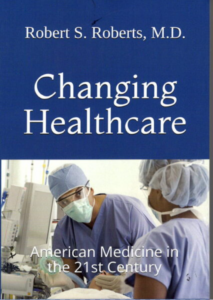Nearly two years ago I wrote a post on the lack of healthcare price transparency (Healthcare Price Transparency Needed). Since then not much has changed.
A little known case before the Supreme Court, Gobeille v. Liberty Mutual, concerned a challenge to the right of states to collect healthcare data from insurance carriers under the Affordable Care Act. I mentioned this important case in my earlier post.
Unfortunately, SCOTUS found in favor of Liberty Mutual by a 6 – 2 vote. This decision upheld the opinion that states cannot force insurance plans to provide healthcare data, because ERISA protects these plans from all but the most trivial state recordkeeping requirements. This deals a blow to state efforts to increase transparency.
Why is this a problem?
The recent experience of two different people in the State of New York is illustrative. Steve Cohen, writing in The Wall Street Journal, tells the tale of Michael Frank, a 52 year-old Westchester executive, who underwent a left hip replacement in 2015. The Manhattan hospital where it was performed charged roughly $140,000. The insurance company paid the discounted rate of about $76,000, and his share – a 10% co-pay, plus a couple of uncovered expenses, was just over $8,000.
He contacted Mr. Cohen, whose name was noted in the media regarding a lawsuit against a different insurer. Cohen had personally undergone bilateral hip replacements, six months apart, at the same hospital during the same approximate time frame. The cost to Cohen was only his deductible. This difference is accounted for by the differences in their insurance policies.
But here’s the real story. When Cohen researched the actual charges for his two hip replacements, he found he was charged $175,000 for one and $180,000 for the other. The insurance company paid discounted rates of $75,000 and $77,000.
To combat this problem, New York’s then-attorney general, Andrew Cuomo, in 2009 created a nonprofit organization called FAIR Health. Its purpose was to provide consumers accurate pricing information for all kinds of medical services. Cohen contacted FAIR Health and found the out-of-network price for a hip replacement in Manhattan was $72,656, a close approximation to his and Frank’s experience. However, they were both in-network and the FAIR Health estimate for in-network was only $29,162.
Further research found there were no extenuating circumstances, such as medical complications, to explain the disparities. The results of this research discovered the fundamental problem – the data submitted for calculation of these estimates came from insurance companies, not from providers such as hospitals and physicians.
As long as insurance companies are protected from disclosing accurate data on healthcare, and bills are paid by insurers rather than patients, there will be problems in healthcare transparency. Consumers need to become more involved in the process of purchasing healthcare if they are to be influential in healthcare pricing.
Solutions to the lack of healthcare pricing transparency include:
- Health Savings Accounts – savings benefit patients, not insurers
- Published pricing by providers – doctors and hospitals
- National database for medical prices – to allow state comparisons
Let me know if you have other ideas for increasing healthcare pricing transparency.

